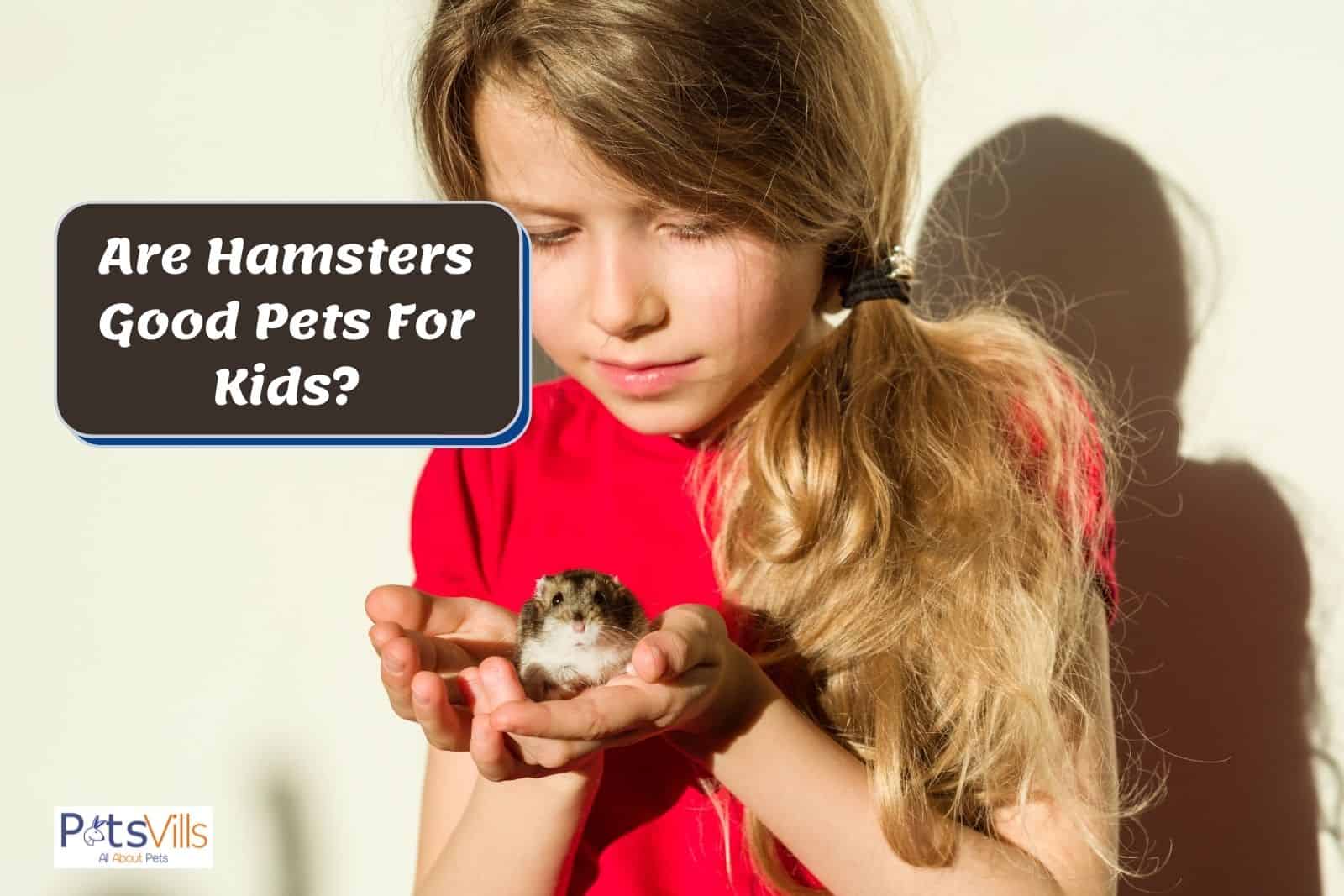When your child starts getting a bit older, it is quite common to ask for a pet.
Are hamsters good pets for children? Hamsters can make great pets for slightly older children as it provides them with a set of responsibilities and teaches them how to look after a pet.
Before getting a hamster for your child, you must correctly educate them on treating and looking after the hamster.
Get our handbook of small animal practice!
Table of Contents
Are Hamsters Good Pets for Kids? [More Information]

Hamsters can make wonderful pets for kids as long as they are cared for properly.
Hamsters are seen as the ultimate starter pet, and for good reason.[1]
They are fairly cheap to keep, low maintenance, cute and don’t require walking in cold and rainy weather.
Hamsters can be ideal for children who have never owned a pet before.
They introduce responsibilities and commitment to a child, as they will need to clean, feed, and interact with their hamster to keep him happy.
This is a good way to help kids learn about responsibilities, chores, and sometimes people have to do things they don’t want to (cleaning is never fun!).
Even though hamsters are less time-consuming and low-maintenance to keep than other animals, like a dog or cat, they still require upkeep and your attention to survive.
Owning a hamster still means your child has a duty of care for his wellbeing.
If your child looks after their hamster well for his entire lifespan, then it shows you that they are sensible, responsible, and mature enough for potentially a more taxing pet.
Therefore, hamsters are a good pet for parents to see if their child is really going to commit to looking after an animal.
What Ages Are Hamsters Suitable for?
Hamsters are generally recommended for children over the age of 6 with some guidance from an adult.
Hamsters are fragile, so they need to be handled gently.
They can also bite if they feel frightened [2], which could be caused by loud noises, improper handling, or being woken up abruptly.
A hamster bite is excruciating and can draw a lot of blood, which could cause a young child to feel scared and nervous when handling or helping care for their hamster.
They might feel their hamster is mean or nasty and lose interest in keeping him.
This is why hamsters are more suited to children over 6. Hamsters will usually show signs that they are unhappy and do not want to be touched, like growling, showing teeth, or raising their paws.
However, a small child may not be able to pick up on these warning signs and could be bitten as a result.
If held too tightly or roughly, a hamster might not display these warning signs and go straight to biting.
Syrian hamsters are typically more ideal for children. Being bigger means they are a bit more robust easier for children to hold. They also tend to be friendlier and more docile.
Dwarf species move extremely quickly, are harder to tame, and can be nippy, so they are better suited for children over the age of 10.
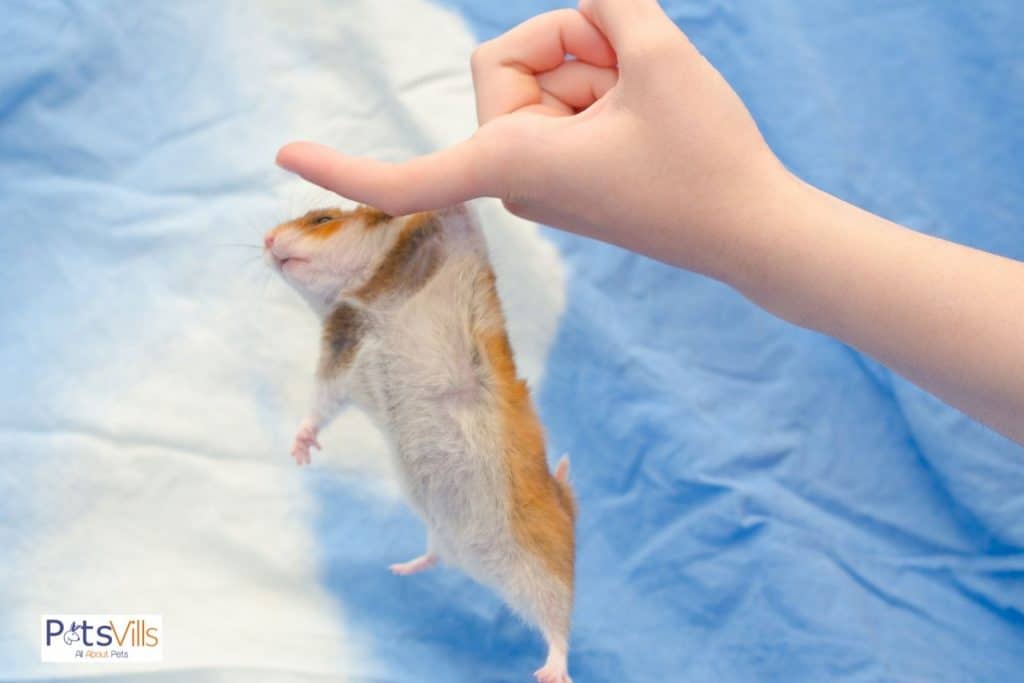
As well as being a good way of giving children responsibility, hamsters also serve as a valuable life lesson about death.
Hamsters have an unfortunately short lifespan.
Most hamsters only live between 18 months to 2 years (sometimes longer, if well cared for).
It’s sad when they eventually pass away, but they will help teach children about death and grieving.
Related: Do Hamsters Like to be Pet?
Things to Consider When Buying a Hamster for a Child

If you’re thinking of purchasing or adopting a hamster for a child, it is important to understand that you could end up looking after it.
Even if your child promises and reassures you that they will look after their hamster, there’s still a possibility that they may grow bored and lose interest in their pet.
If this happens, that responsibility then transfers to the parent or guardian, which means they will be the ones who end up having to look after the hamsters.
Hamsters should not be seen as “throwaway” pets that can easily be discarded. They are still living animal that is dependent on their owners for survival.
If your child does lose interest in their hamster, then it’s up to you to make sure that hamster is cared for.
It would be best if you never bought a hamster on impulse. Always make sure you can look after him for his entire lifespan.
Read our hamster care guide.
How Much Do Hamsters Cost?
Depending on the species [3], Hamsters typically cost between $10 and $20. Dwarf hamsters are usually on the lower end of that estimate.
For harder-to-find species like the Chinese hamster, you could pay even more.
The price of hamster cages can vary. For small cages, between $10 to $30 is the norm. Obviously, the larger the cage is, the more expensive it will be.
There is an abundance of hamster cages available on the market, but not all of them are suitable for your furry friend.
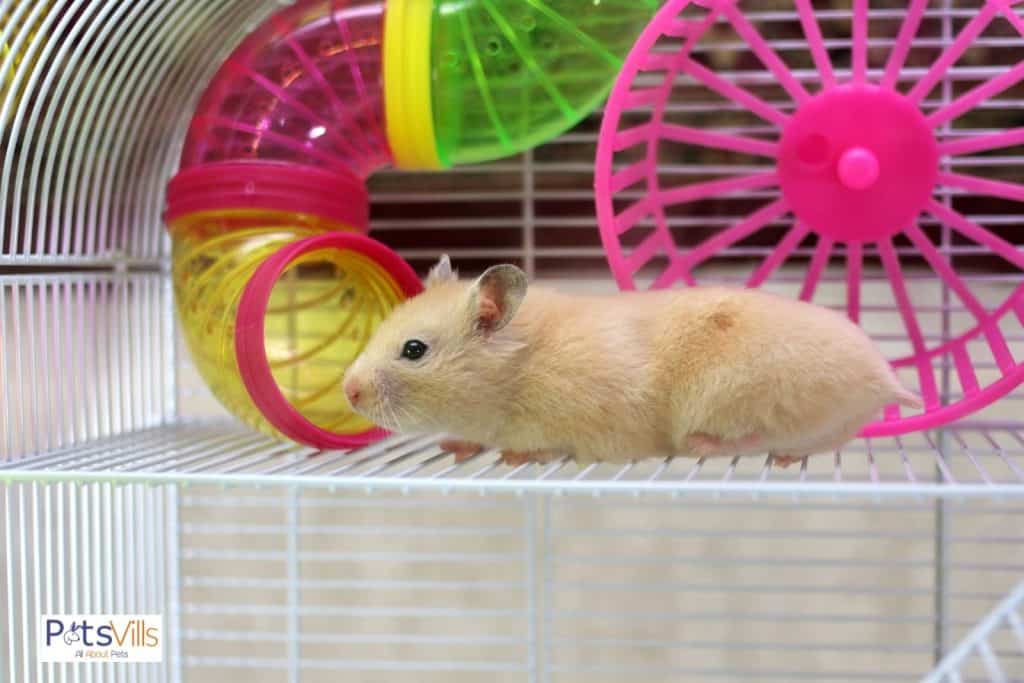
Hamsters need a surprising amount of space that many cages don’t offer.
Your hamster’s cage needs to have enough room for him to move around in and to fit the bare essentials, such as a wheel, nesting box, and food/water dishes.
It is generally recommended that the minimum cage size for any hamster should contain 450sq of space. Although more is always better, some hamster owners feel 650sq is ideal.
For cages of this size and over, anywhere between $40 to $100 (sometimes more!) is expected. If you purchase a second-hand cage, you won’t have to spend as much.
Dry hamster food is usually inexpensive at around $2 and $5 for a decent-sized bag.
Hamsters only require about two tablespoons of food per day, so your bag of food should last you a few months before you need to buy a new one.
Some hamster foods can be expensive, so if you are looking to feed your hamster a more high-quality diet, then you could pay around $10 to $15 for a bag.
Bedding Costs
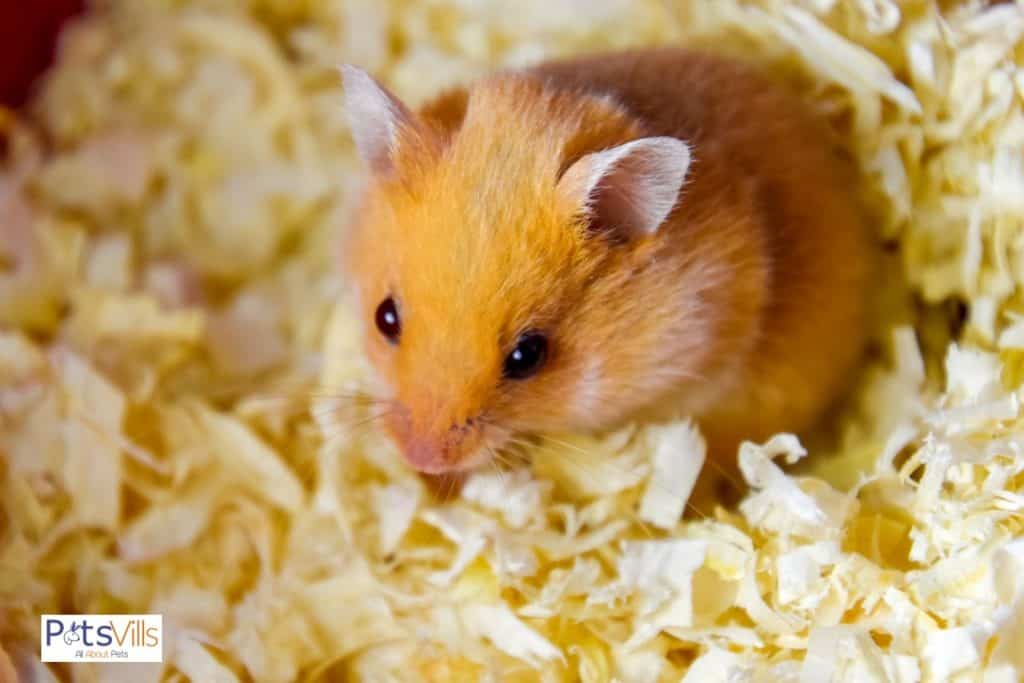
Bedding can be a bit pricier, depending on what type you decide to go with.
Paper-based beddings or ones made with cellulose fiber are usually costlier, but they are very soft and comfortable for your hamster. Expect to pay between $7 to $11 for around 30 liters and $16 to $25 for 60 liters.
A lot of pet shops sell Cedar or Pinewood shavings as hamster bedding. These are not suitable as they can contain harmful chemicals that can be detrimental to your hamster’s health.
Additionally, sawdust should also not be used as bedding as it is very dusty and can irritate your hamster’s delicate respiratory system.
If you want to use wood shavings, look for ones made with Aspen. You can usually find this type of bedding in the reptile section at your local pet store. Aspen bedding is typically very cheap, costing around $10 to $15 for a large bag that will last you a while.
Recurring Expenses
As well as the initial start-up costs of owning a hamster, there are recurring expenses you need to budget for.
Food and bedding come under recurring expenses, as do chew toys, vet bills, and possible equipment replacement.
Your hamster’s teeth are constantly growing. This means he needs to chew toys to help wear them down to stop them from becoming too long.
Chew toys are usually made of wood and typically cost around $2. Chew toys should only need replacing every few months.
Hamsters can get health issues that require medical treatment, especially as they get older.
It’s a good idea to budget each month for a possible vet visit so if your hamster doe become unwell, and you’re not hit with a big bill.
Depending on the treatment, a single vet appointment for your hamster could cost around $50 to $80. This could be a lot more for more severe treatment or surgery.
Your hamster’s cage, wheel, toys, etc., could break, so it’s a good idea to ensure you have the funds available to make sure you can cover these things if they need replacing.
How Much Work Does it Take to Look After a Hamster?

Hamsters, as a rule, do not take much work to look after. On average, you will only need to clean your hamster’s cage once a week or fortnight.
Even when his cage needs a clean, this doesn’t take too long to do.
The only daily jobs you will need to do for your hamster are feeding him and water.
If you want a tame, friendly hamster, then handling would also be included in these tasks.
This is minimal work compared to other pets, so hamsters are good for people with busy lives but still want a pet.
You should make sure your hamster has enough enrichment to prevent him from getting bored. These include toys, a wheel, and time away from his cage.
You can buy toys or make ones yourself using household items.
Good materials to use include cardboard toilet/kitchen paper rolls, plant pots (these are great for nesting areas!), shoe boxes, and even lollypop sticks (thoroughly washed!).
Hamsters are surprisingly active despite their appearance, so a good size wheel is needed for this furry friend to run off some steam.
For Syrian hamsters, a wheel at least 10 inches is adequate. 6.5 inches and over is suitable for dwarf hamsters.
A good way of knowing whether your wheel is too small for your hamster is to look at his back when he uses it.
If your hamster’s back is arched when he is running on his wheel, then the wheel is too small for him.
You want your hamster’s back to being completely straight when he uses his wheel.
Do Hamsters Bite?

Hamsters can and will bite in certain circumstances.
Hamsters use biting as a defense mechanism, so they will lash out to protect themselves if they feel scared or threatened.
Certain species are more prone to being nippy, such as the Chinese hamster and the Roborovski.
Newly bought hamsters from pet stores and untamed hamsters are likely to bite as they are not used to human contact.
Additionally, hamsters can also bite when taken by surprise, such as when you suddenly wake them up or spook them.
Read More: Why is my hamster biting me softly?
How Often Should Do You Need to Play with Your Hamster?
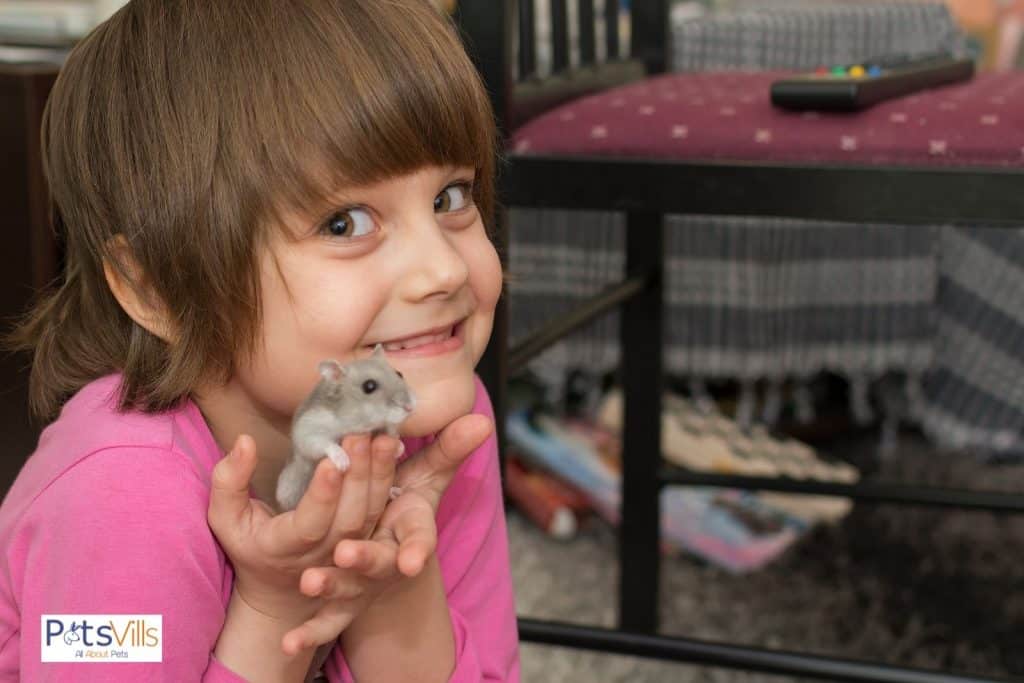
Playing with your hamster is important to provide him with enrichment and help him stay tame.
It would be best if you aimed to play with your hamster once a day for around 10 to 20 minutes.
Playing with your hamster can include handling and letting him outside of his cage to explore. Make sure the space your hamster is exploring is safe and enclosed so he cannot get into any mischief.
Many hamster owners use a large cardboard box filled with toys to let their hamsters run around.
How Often Do Hamsters Need to be Cleaned?

The size of your cage will depend on how often your hamster’s cage needs to be cleaned out.
For the average cage, once a week or fortnight is usually sufficient.
If you do spot cleans (in which you remove any droppings or sodden bedding) every couple of days, then you may be able to get away with cleaning your hamster’s cageless often.
If you begin to notice the smell of your hamster, that’s a sign that his cage needs a clean.
Some hamster owners with extremely large and spacious cages can get away with only cleaning their hamster’s cage once a month, or even less.
This is one reason why giving your hamster a big cage is a plus (there are a lot of other positives)!
What Are the Pros and Cons of Owning a Hamster?
Like with any pet, hamsters have their positives and negatives. Here are some pros and cons of owning a hamster.
| Pros | Cons |
|---|---|
| Relatively low-maintenance | Short lifespan |
| Not as pricey as other pets | They can bite |
| Fun to watch and interact with | Most active at night |
| Don’t take up a lot of room | They are easily stressed out |
| They are naturally clean animals | |
| They teach responsibility to kids. |
Here’s a video with pros and cons:
FAQs
How old should my child be before I get them a hamster?
This will vary depending on the maturity of your child. Generally, a good age for a hamster is six years + with help from the guidance of an adult.
Do hamsters like to be petted?

Hamsters are tiny and delicate, and it’s important to be careful when petting your hamster. It depends on each hamster. Some hamsters enjoy it while others don’t.
Do hamsters smell?
Hamsters don’t generally smell unless you haven’t cleaned their cage for a while. You should spot cleaning your hamster cage often and only deep clean their cage when they need it. Deep cleans can stress your hamster.


Resources
- 1. Getting a Pet Hamster [Internet]. WebMD. Available from: https://pets.webmd.com/getting-a-pet-hamster
- 2. Manual B. Hamster Facts: Diet, Habits & Types of Hamsters [Internet]. Live Science. Live Science; 2014. Available from: https://www.livescience.com/27169-hamsters.html
- 3. Hamster Species [Internet]. Hamster Society (Singapore). [cited 2022 Jan 13]. Available from: https://www.hamstersociety.sg/hamster-care-blog/2019/2/24/hamster-species
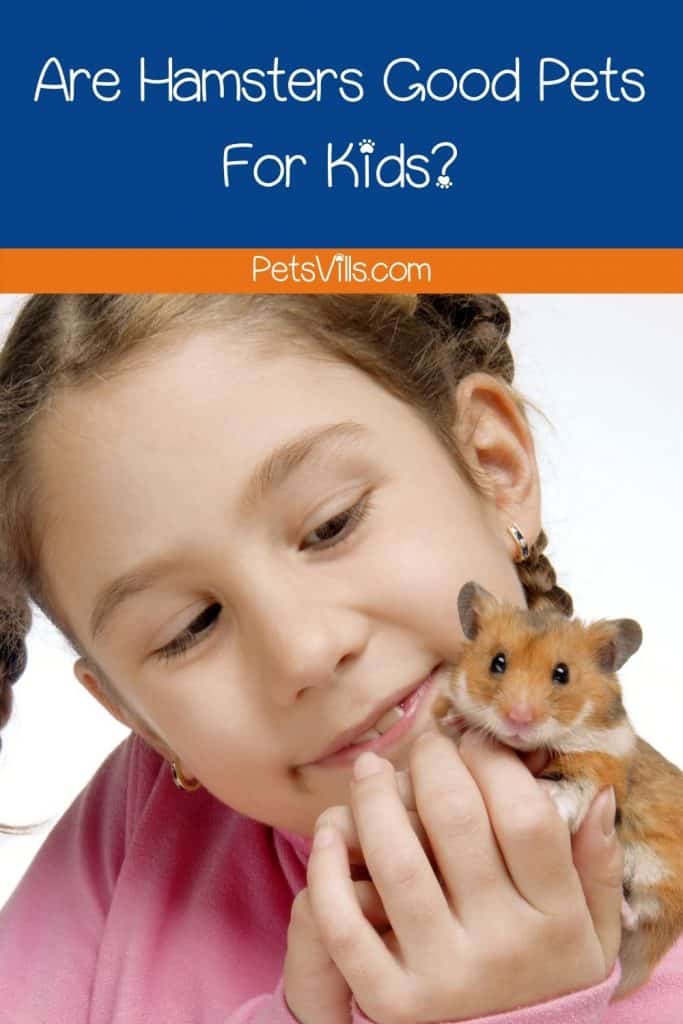
Do you let your kids play with hamsters? Let us know in the comments how they treat them!
Alina Hartley is a small-town girl with a ginormous love of bearded dragons. It all started with Winchester, a baby bearded who was abandoned at the shelter by his former owners because of a birth defect that caused one front leg to be shorter than the other. Alina originally went to the shelter looking for a guinea pig, but one look at Winchester and it was love at first sight. From that day on, Alina has dedicated her life to learning everything she can about bearded dragons. She loves helping new beardie parents start their incredible journey with these magnificent reptiles.
Follow her on:
LINKEDIN
TWITTER.
Read her latest articles HERE
Learn more about her HERE.

